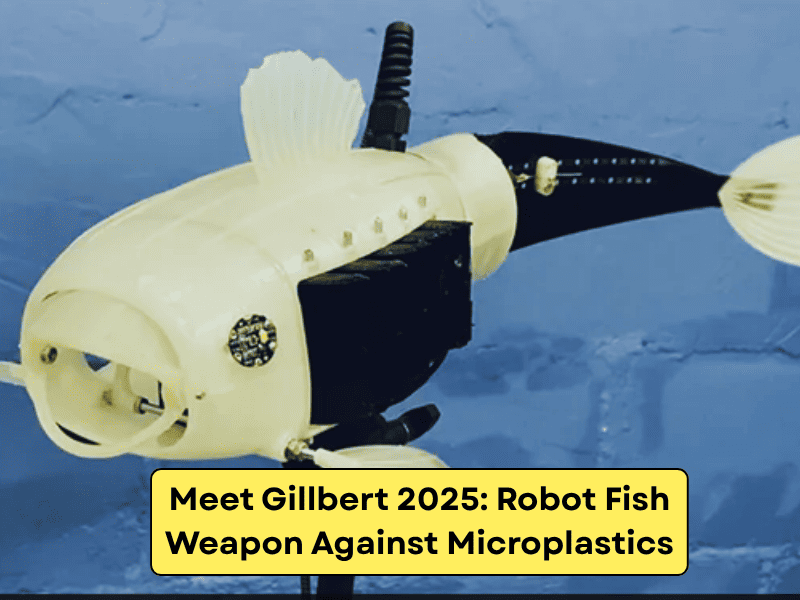How Physical AI and Robotics are Redefining the New Era of Automation in 2025
2025 is the year of robotics and artificial intelligence, as we have seen so much growth and development in

2025 is the year of robotics and artificial intelligence, as we have seen so much growth and development in these sectors this year. Autonomous mobile robots have almost taken over the majority of the industries as they can perform tasks from factory floors to farm fields. One of the biggest advantages of robots is that they can work 24/7 without feeling fatigue and require minimal to zero human input to perform tasks. The fusion of physical AI and robotics is not new to the world, as people have been trying to integrate both of them over the past few decades.
However, the integration of both physical AI and robotics seemed difficult, and hence it remained a foreign concept to us. But now, the fusion of physical AI and robotics has made the machines smarter, safer, and more adaptable to work along with humans in any environment. Experts in robotics, like Shawn Luke from DigiKey, Bob Card, and Theo Kersjes from onsemi, have recently given a sneak peek into the world of robotics and machines. This conversation was a very insightful interview as it gave the audience a clear picture of a world where machines not only think but also move through space with intelligence and elegance.
So, let’s move ahead and look into the conversations between these robotics geniuses and what they have to say about the rise of physical AI and robotics in the year 2025.
Safer and Smarter Robots in Workplaces
We are not foreign to the idea of industrial robots, and historically, they have been stationary giants that were able to perform repetitive tasks but weren’t very human-friendly. These challenges have been overcome by the fusion of physical AI and robotics in today’s digital era. Smart robots have a range of sensors integrated into their systems, like LiDAR, ultrasonic, cameras, and radars. These sensors help the robots detect and navigate through their surroundings without posing any harm or threat to human beings or other livestock.
The sensors also work in real-time and hence, help robots and humans to work together in harmony without being a threat to one another. The smart robots can lift heavy weights, handle repetitive tasks, hazardous work, and can save a lot of time and boost productivity. The best thing about these smart robots is the flexibility, as the arms of these robots have a mix of physical AI and robotics and can perform multiple tasks. According to us, this shift from traditional to smart robots has reduced most labour shortages in industries and helped in improving task performance as well.
AMRs and Autonomous Vehicles
We are all familiar with autonomous vehicles that are driverless and have sensors so that they can navigate through the road without being an obstacle in anyone’s life. AMRs of robots are similar to autonomous vehicles and rely on similar principles, like simultaneous localisation and mapping. The adoption of 10BASE-T1S has upgraded the speed and Ethernet-based communication in robots in the digital era. If we compare this system to the traditional CAN system, it has a lot of advantages, as it offers:
- Better and higher rates of data with 10Mbps compared to 2-5Mbps for CAN.
- It has reduced the complexities in wiring and weight compared to the traditional CAN systems.
- There are no gateways required between CAN and Ethernet networks.
Controllers by onsemi include NCN26010 and NCN26000 support extended cable lengths and enhance flexibility in AMR design. According to our perception, this convergence of robotics and automotive tech is a breakthrough in both fields and is accelerating innovation in both of them.
Sensors with Outdoor Potential
Robots were traditionally considered as indoor creatures as they were machines that might go bad in rain, uneven terrain, or any other obstacle. However, in the digital era, we see robots as outdoor creatures with advances in dynamic range sensors, force feedback systems, rotational positioning sensors, and moisture detectors. The AMRs of robots can help and assist you in agriculture, outdoor delivery, and industrial settings as well. The fusion of physical AI and robotics has enabled robots to work in every sector or industry, including healthcare, manufacturing, packaging, and schools as well.
The onsemi NCS32100 Inductive Position Sensor can offer users extreme accuracy at high RPMs and allow very precise control in demanding situations. This integration of physical AI and robotics has allowed robots to pick berries without bruising themselves or navigate a muddy construction site without getting lost. According to us, we have got a lot in this digital era that we lacked in the previous years in terms of robotics and artificial intelligence.
Read More: Perle Secures $9M to Build Transparent, Human-Powered Web3 AI Training Platform
Read More: How RoboSense Active Camera is Redefining the New Robotic Vision in 2025
The Road Ahead for Physical AI and Robotics
One of the most important and unsung heroes when it comes to physical AI and robotics is power management in AMR design. It has helped onsemi’s converters to achieve over 95% efficiency, and coupled with NVIDIA Omniverse Issac Sim, engineers can model robot behaviour now. Looking ahead to 2025, we see this year as proof that the digital era is moving fast and making a lot of advancements in technology and artificial intelligence.





